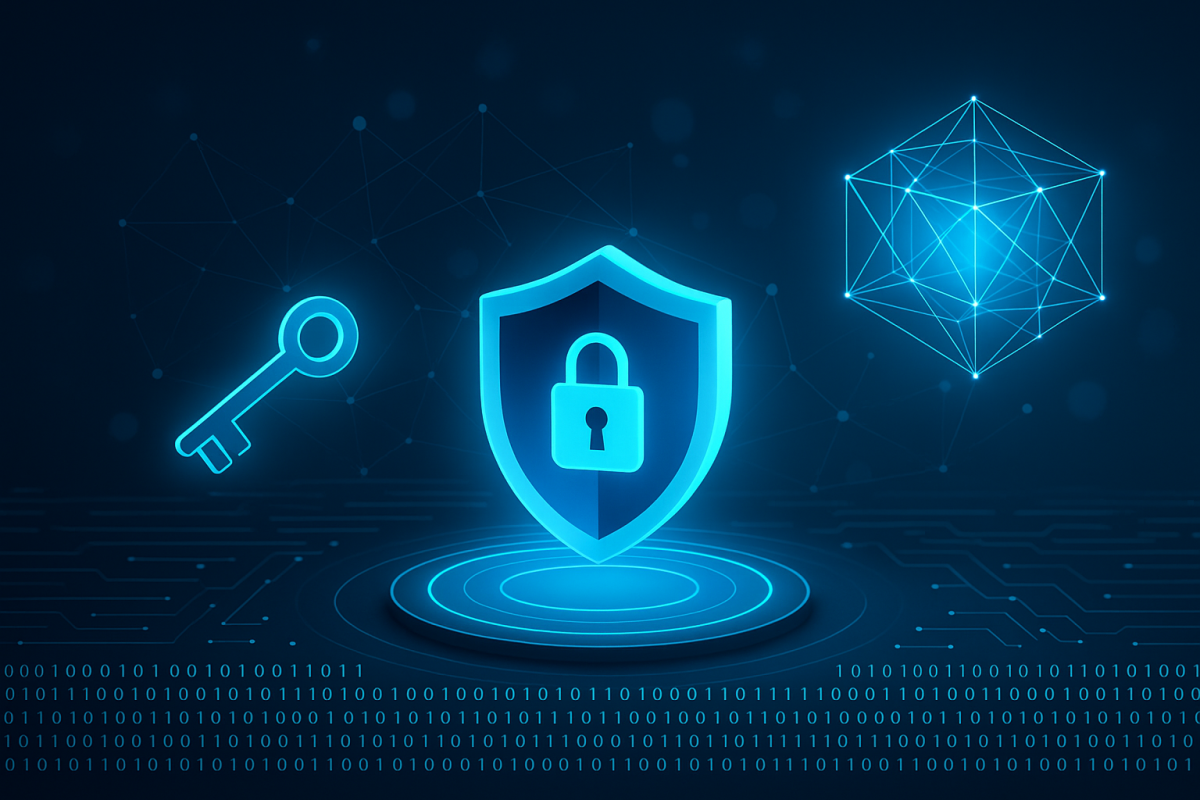The calm before the storm on the horizon
In cybersecurity, most threats arrive unannounced. Zero-days, insider leaks, and novel phishing techniques keep CISOs awake because they strike without warning. Quantum decryption, by contrast, is a rare exception; it is a storm we know is coming. Scientists have already demonstrated quantum algorithms that can, in theory, reduce the time to break RSA-2048 from centuries to hours. The only barrier is hardware scale. When that threshold is crossed (a question of when not if), every piece of encrypted data protected by classical algorithms becomes vulnerable overnight.
The key insight for today’s leaders is this: if your data can be stored today, it can be stolen today, and then decrypted tomorrow. Attackers don’t need a functioning quantum computer to exploit the risk; they just need to capture and warehouse your traffic now. This “harvest now, decrypt later” strategy is already being observed in the wild, as state-sponsored actors collect massive encrypted data troves in anticipation of future decryption power.
Why “later” may arrive sooner than expected
Timelines for quantum computing used to be so far out in time, and there were so many questions around how it would look “someday in the 2040s” that few needed to take action. But in the last two years, the rate of progress has accelerated sharply. IBM’s Condor, Google’s Sycamore 2, and several Chinese prototypes have demonstrated coherence times and qubit counts that push the edge of practicality. Government agencies have responded accordingly:
- The U.S. National Institute of Standards and Technology (NIST) finalized its first post-quantum cryptography (PQC) standards in 2024.
- The White House issued Memorandum 10-23, mandating all federal systems begin migration planning now.
- Major vendors (Microsoft, Cisco, Cloudflare, AWS to name a few) have started rolling out PQC-ready options in mainstream products.
The science is settled, the policy is in motion, and the technology is ready; what’s left is execution.
The myth – and the error – of “waiting until it’s mature”
Many organizations are treating post-quantum cryptography the same way they once treated IPv6, or multifactor authentication: “We’ll get to it when it’s mainstream.” But encryption isn’t a switch you flip; it’s a fabric woven throughout every server, router, and data store you operate. Waiting until the last minute will mean retrofitting your entire digital backbone under duress – while adversaries are already exploiting the gap.
Moreover, unlike other technology shifts, quantum migration has a non-linear risk curve. The moment a quantum computer crosses the decryption threshold, all existing data protected by vulnerable algorithms (even decades-old archive) becomes transparent. That means delay isn’t neutral; it compounds exposure every day you postpone.
The “store-now, decrypt-later” economy
To understand why action today matters, consider how attackers monetize encryption lag. Many state-level actors have shifted to long-horizon cyber-espionage models. They siphon encrypted databases, knowing that when quantum decryption matures, those archives will reveal:
- Intellectual property – designs, patents, source code
- Sensitive financial and health records
- Historical communications – contracts, M&A negotiations, legal discovery files
For a corporation, that means an exposure not just to data theft, but to retroactive compromise – the revealing of things long classified “secure”. The potential for reputational and regulatory fallout is staggering beyond anything society has ever dealt with.
Proven and certified solutions now exist
Until recently, quantum-resistant encryption felt experimental – dense white papers from academia rather than practical engineering. That changed when NIST certified its first PQC algorithms in mid-2024:
- CRYSTALS-Kyber – for key encapsulation and exchange
- CRYSTALS-Dilithium – for digital signatures
- Falcon & SPHINCS+ – for specialized or constrained environments
These algorithms are already integrated into leading TLS libraries, VPNs, and device firmware stacks. Vendors such as Cisco, Fortinet, and Palo Alto Networks have begun shipping hybrid implementations combining classical and PQC schemes for backward compatibility. Open-source ecosystems like OpenSSL 3.2 and WireGuard PQC forks make pilot testing straightforward even for mid-market IT teams.
The myth that post-quantum encryption is “not ready” is simply no longer true.
The business case: cyber insurance and compliance pressures
For understandable reasons, Cyber insurers are starting to ask pointed questions about quantum readiness. Their actuaries understand the asymmetry between classical encryption’s time horizon and the speed of quantum progress. By late 2026, we expect underwriters to begin requiring attestations that critical infrastructure has been assessed for PQC migration – just as they now require MFA and endpoint detection.
Regulators are moving in parallel. The EU’s Digital Resilience Act, the U.S. Quantum Computing Cybersecurity Preparedness Act, and the U.K. National Cyber Strategy 2025 all reference PQC migration as a compliance expectation. For boards, that transforms this from an IT initiative into a fiduciary duty.
Practical migration priorities
The sheer ubiquity of encryption can feel paralyzing. Where do you start? The key is to segment your approach into three waves:
- Critical communications and credentials – VPNs, TLS endpoints, SSH keys, and certificate authorities should be first. Compromise here opens every other door.
- Stored data – Databases, backups, and archives containing long-term sensitive data (customer records, intellectual property, legal communications).
- Edge and embedded systems – IoT devices, routers, and operational technology, which have long lifespans and limited patch windows.
Each wave can be approached with hybrid encryption (e.g. pairing RSA/ECC with PQC) allowing graceful fallback during the transition period.
Strategic timing advantage
Early adopters of PQC will not just reduce risk; they will gain a marketing and trust advantage. Just as companies once gained reputation from early adoption of GDPR compliance or zero-trust architectures, demonstrating quantum-readiness conveys a forward-thinking posture. Customers, investors, and partners increasingly view cybersecurity maturity as a proxy for governance quality.
For CIOs and CTOs, it also becomes a leadership opportunity – to show that the organization is proactive, not reactive, in the face of emerging technological shifts. And making these preparations in the “calm before the storm” will make ALL the difference in the success of these projects, the availability and affordability of professionals capable of doing the work.
The hidden but significant ROI of acting early
Quantifying the ROI of security investments is notoriously difficult, but PQC migration is one change that offers measurable returns:
- Avoided breach exposure: Analysts estimate that a single quantum-decrypted breach of sensitive data could cost mid-market firms $20–50 million in fines, remediation, and lost business.
- Reduced insurance premiums: Early PQC adoption can earn discounts similar to those once given for MFA or SOC2 compliance.
- Extended asset life: Infrastructure upgraded now can remain compliant through the 2030s without another major crypto overhaul.
In short, quantum-proofing today buys you a decade of strategic stability.
Common objections – and why they ring hollow
“Quantum is still years away.”
So were ransomware epidemics… until they weren’t. Even if large-scale decryption is five years out, attackers are already harvesting data. The threat is present today.
“It’s too expensive to change everything.”
This is another reason to move sooner vs. later. PQC migration is less costly when integrated into normal upgrade cycles. Waiting guarantees a compressed, crisis-mode, high cost migration later.
“We’ll wait for industry standards.”
That was indeed valid up to the summer of 2024, but no longer. The full suite of standards needed already exist and are being implemented as/into commercial products. NIST, ETSI, and ISO have already published final PQC standards. The time for “waiting” has passed.
Leadership mindset: preparing for inevitability
For executives, the lesson is philosophical as much as technical. Innovation in security is rarely about prediction; it’s about preparation. The organizations that thrive are those that treat foresight as a competitive advantage, seeing the curve before it hits.
Quantum decryption will be one of the defining inflection points in the history of cybersecurity. When it arrives, it will divide organizations into two camps: those who quantum-proofed before they needed to, and those who wished they had.
The call to action
Your organization likely runs hundreds of encrypted channels, thousands of certificates, and hundreds of terabytes (if not petabytes) of stored data. Somewhere in that vast sea is information your competitors, litigators, or adversaries would love to decrypt, once they can.
That is why you should quantum-proof your encryption before you “need it”.
Because by the time you need it, it will already be too late.




